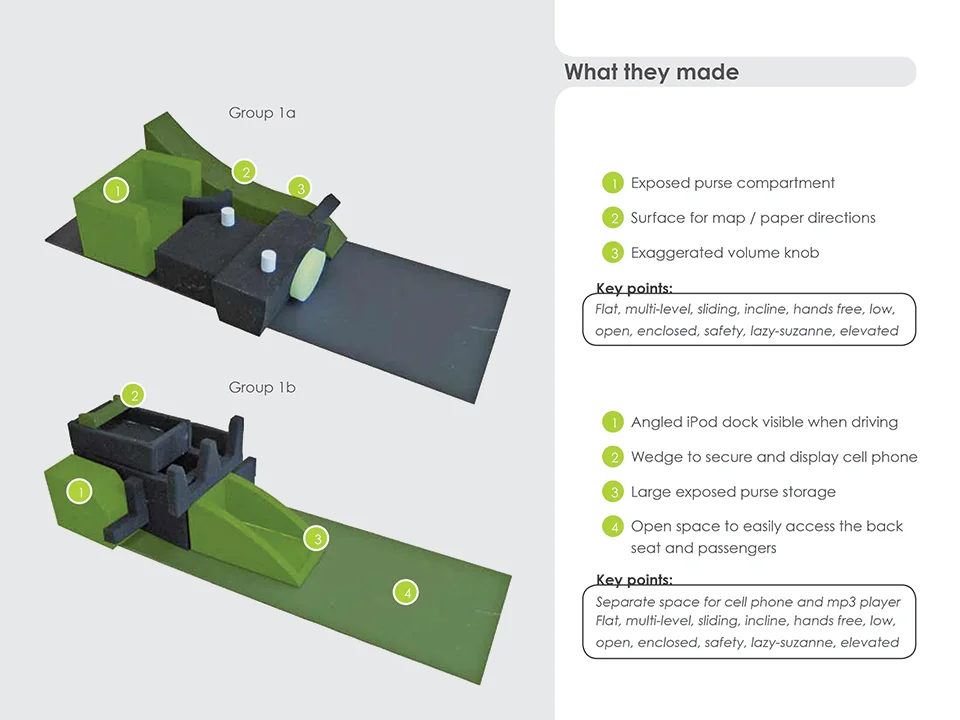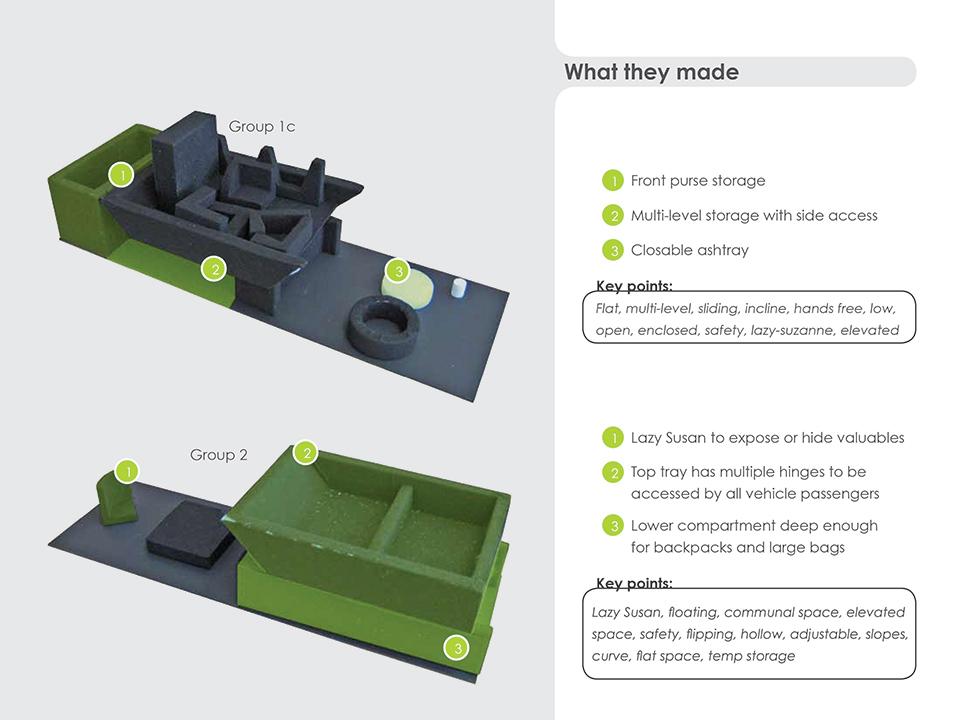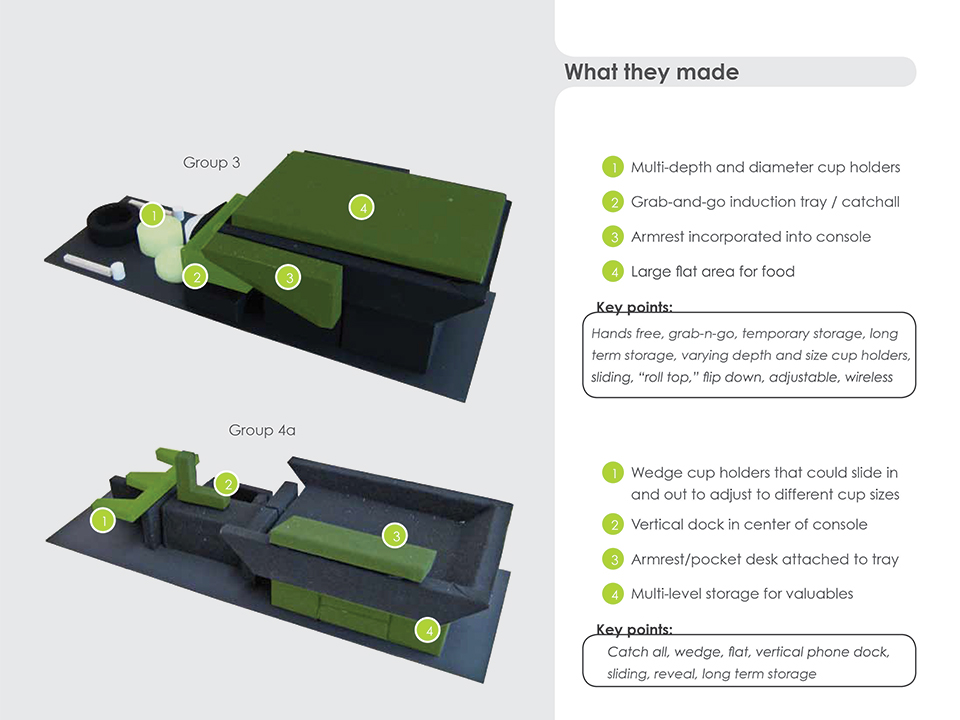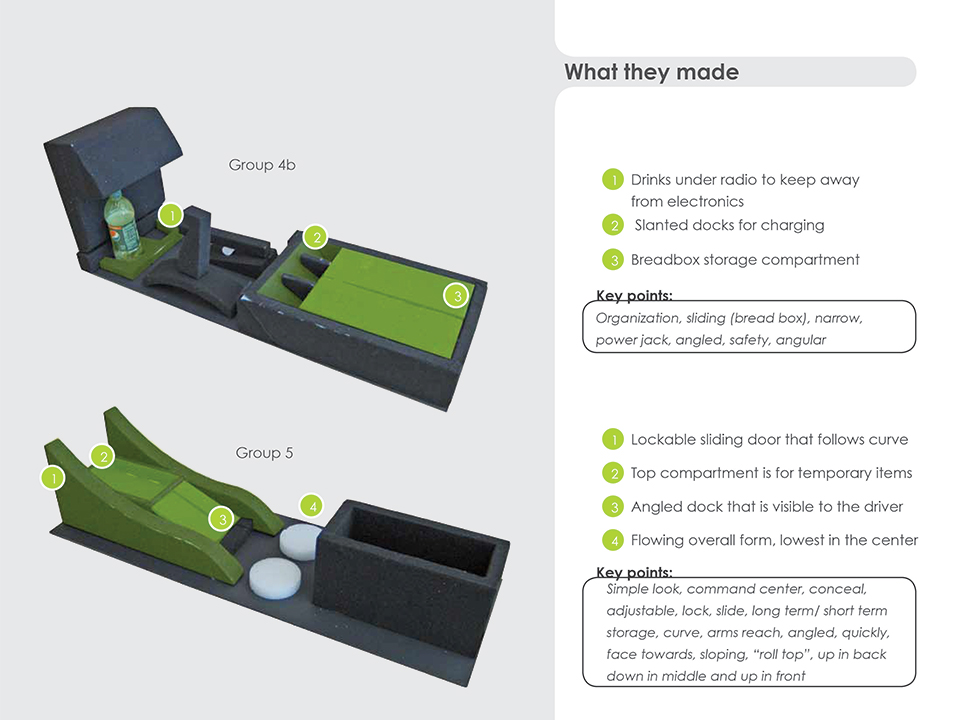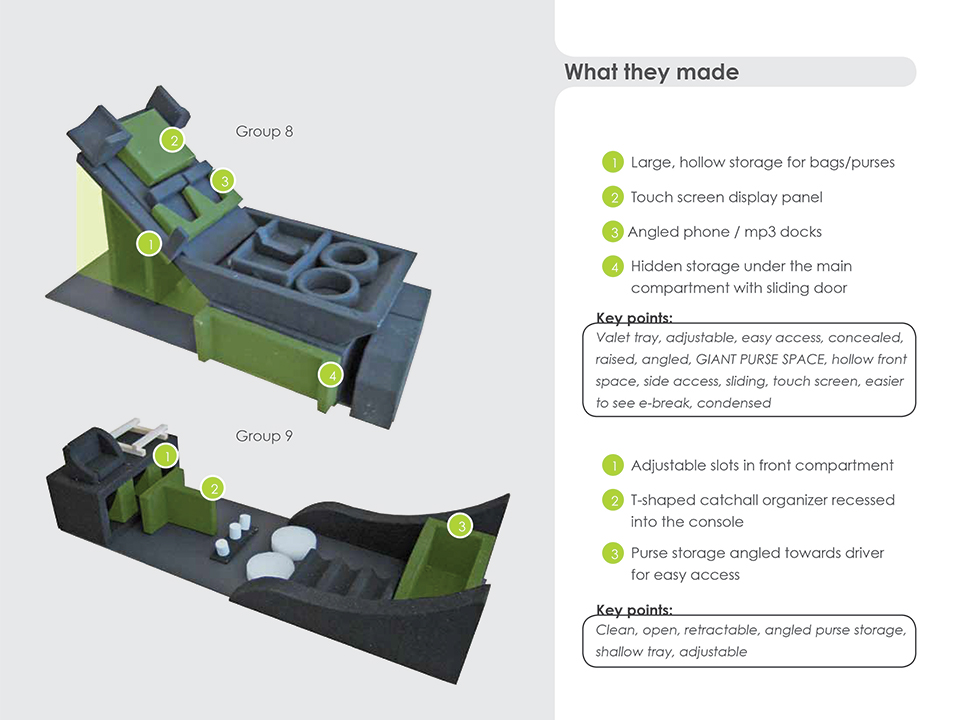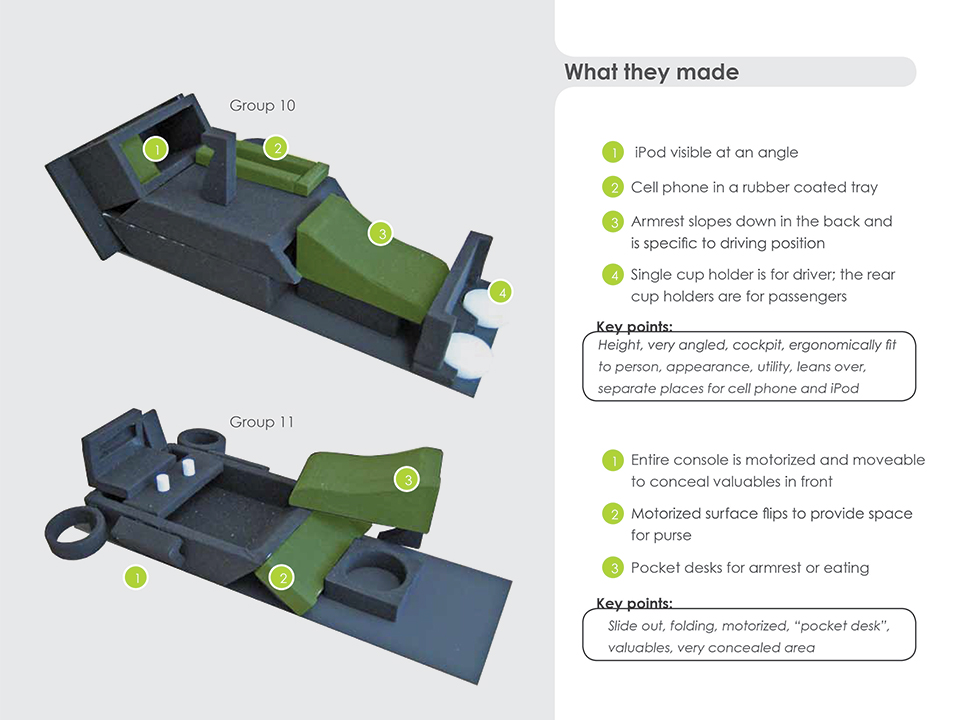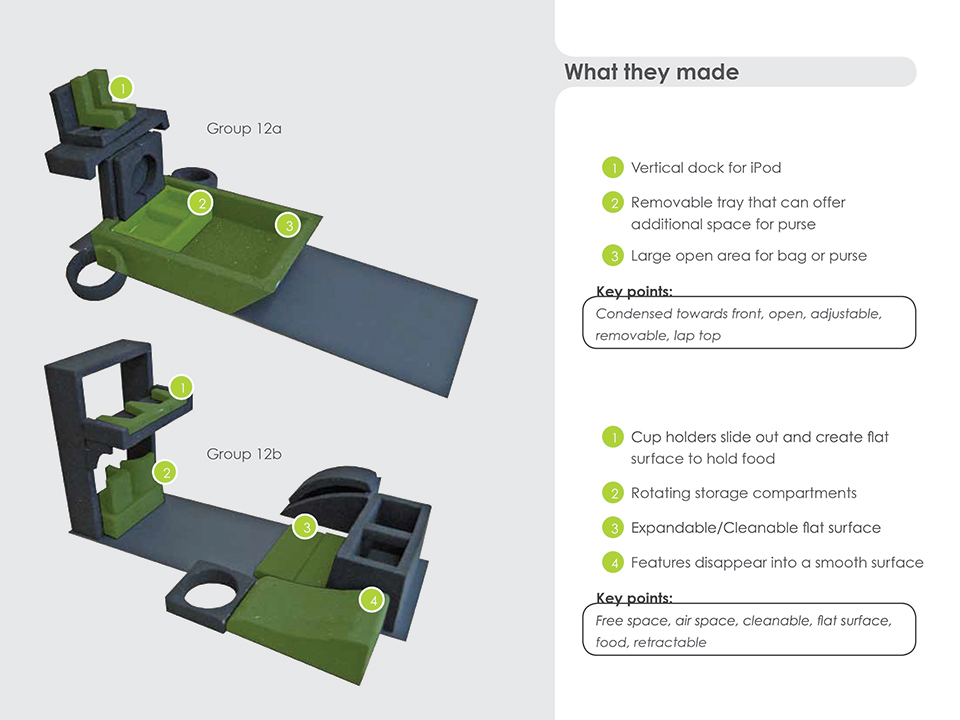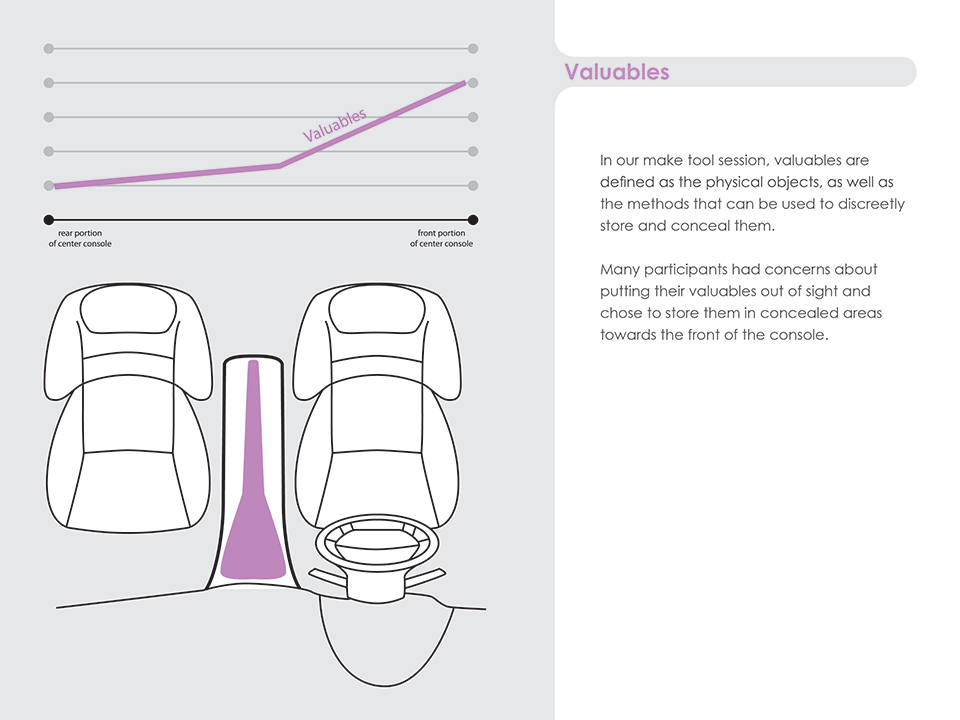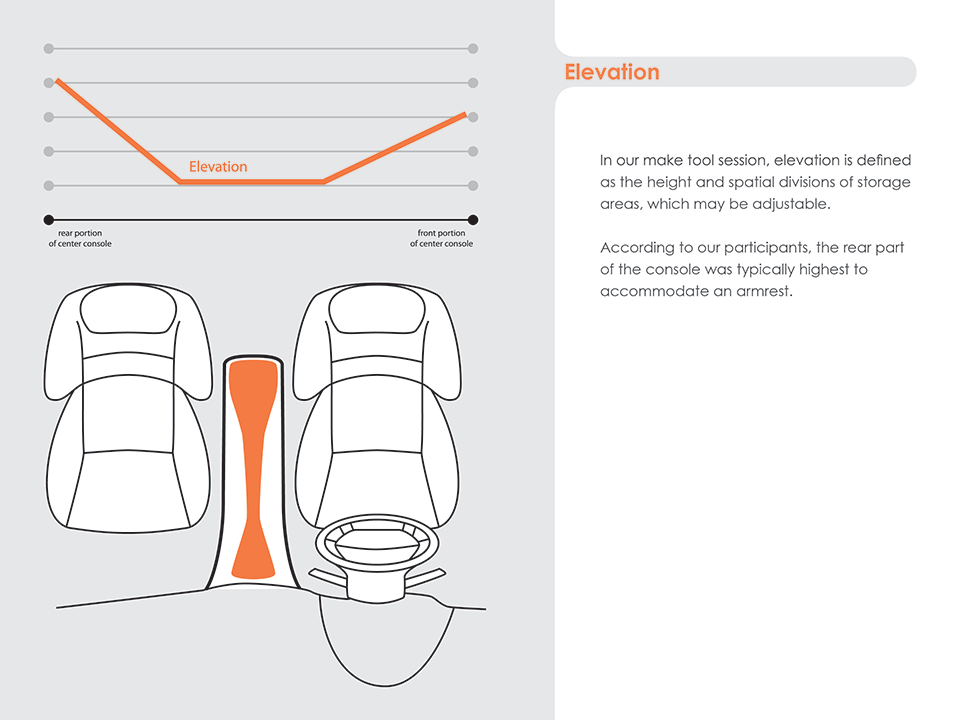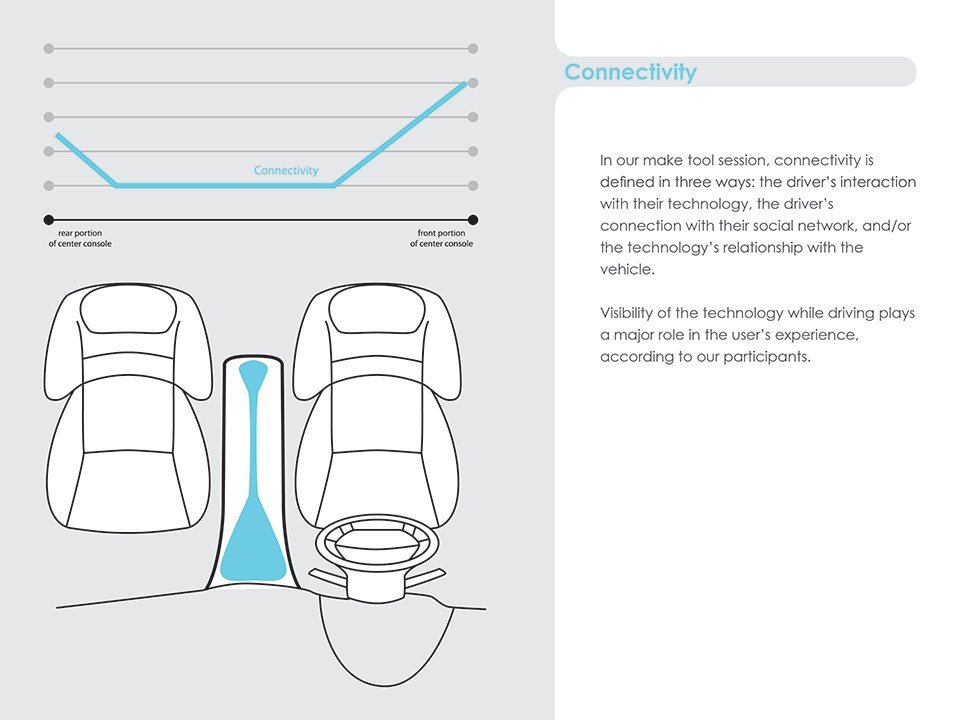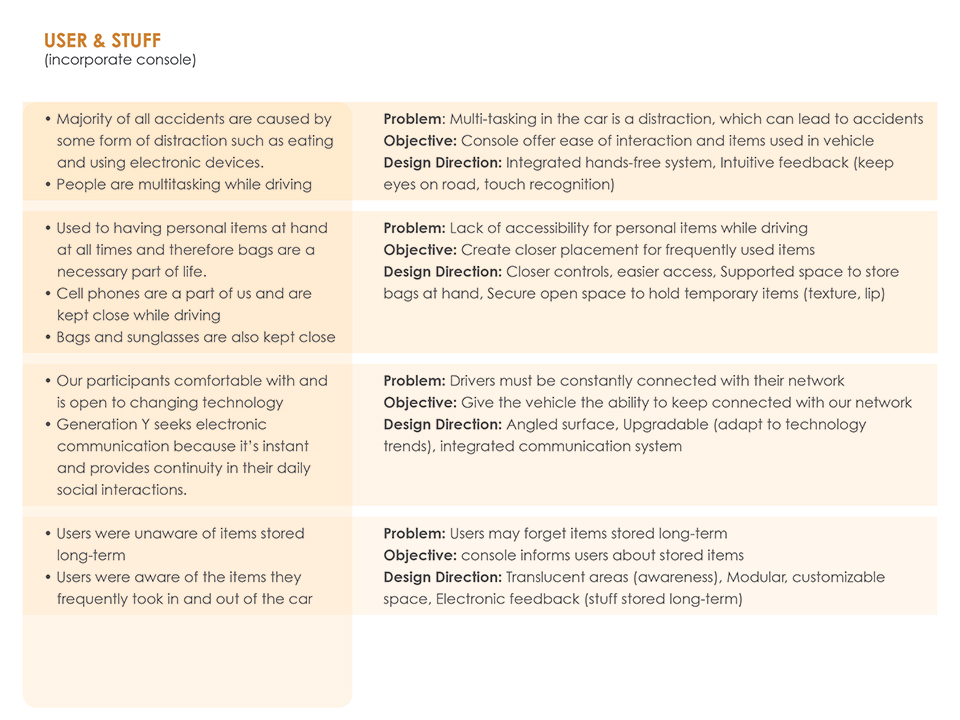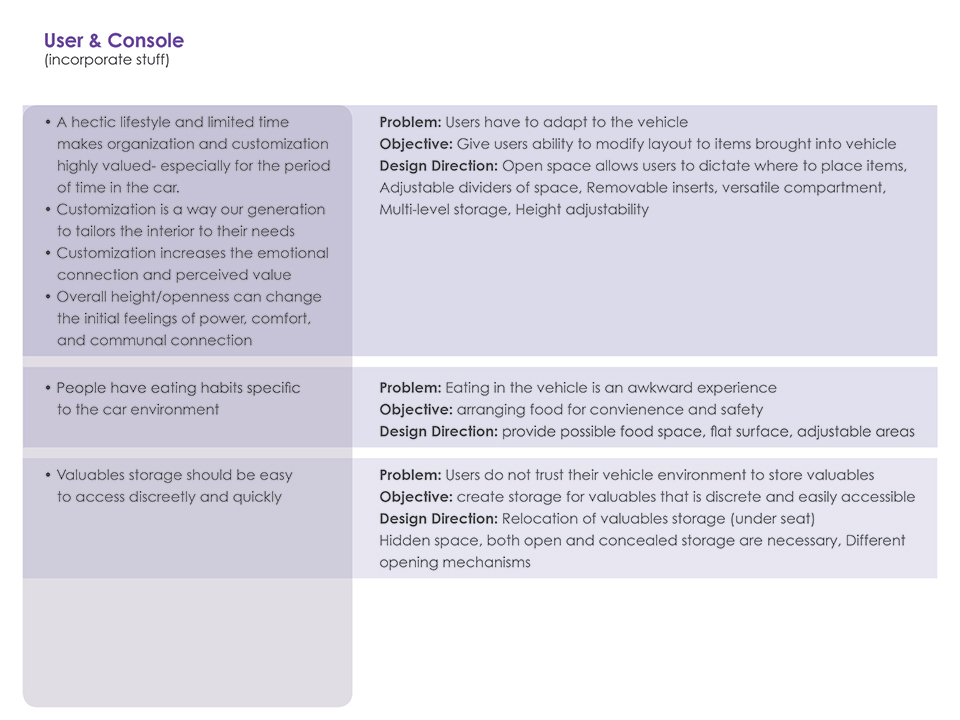How might we design a center console that will appeal to millennials?
Our approach to tackling such a broad research question, posed to us by Honda, was to utilize a wide set of research methods with following objectives in mind:
to listen
to what people say (in-context interviews)
to observe
what people do (in-context interviews)
to experience
what people make
(make-tool sessions)
We began by intercepting 61 students who were about to leave a parking lot.
The in-context interviews revealed the overall workflow and the priority of items within the center console. After being granted permission, we then photographed the current state of their center consoles.
We learned that valuable items are stored as grab and go, whereas long term items are less valuable with the exception of chargers.
None of the participants stated they kept trash in their center console but observations proved otherwise.
After learning the current state of center consoles, we sought to understand what the ideal state of a center console would be for millenials through make-tools.
A make tool is a co-creation research method where common building blocks are given to participants so that they may creatively problem solve and better articulate their needs.
In our research, we gathered 16 groups of 5 people to build their ideal center consoles and describe the features that were most important to them. We gave the participants a wide range of basic foam shapes covered in felt and lots of velcro strips!
After reviewing the video and models, we extracted keywords and organized them into categories through post-it note exploration and rearrangement.
Through affinity diagramming we found seven higher level categories with accessibility and aesthetics being the most important.
Accessibility and aesthetics are expected throughout the center console, so we focused on feature mapping the other high level categories.
To synthesize the research findings, the team broke down the insights by finding the higher level relationships between the user, the console and their stuff. We then created objectives and design directions to assist the lead designer and myself in generating concepts.
To better illustrate how the ideal center console would integrate into the life trajectory of millenials, the team and I developed these personas. The stories are centered around the high level themes generated from the research; Interaction and Modifications, Security and Storage, Technology and Upgradability.
After sketching out lots of configurations and features, we quickly realized that the best way to visualize the concepts would be to build full scale, functional prototypes.
To respect the project timeline and budget, we decided to build everything utilizing only foamcore. At this point in the project, the team was reduced to a lead industrial designer and myself.
The Honda R&D team was kind enough to lend us a current center console model for the Honda Pilot. The lead designer and I began by building a full sized frame that could convert from Concept A to B by simply swapping out features.
During this process, the biggest challenge we faced was developing joints, hinges and other connecting components. Both concepts featured two-way access to the rear storage section along with adaptable components in the front of the console.
Once the models were complete, we had users give us feedback on the concepts after a quick demonstration of all the features.
The comments were very positive and aligned with the insights from our initial research.
“Being given an option is better than being told how to use something.”
“The motions seem classier. Also, cords are not just stuffed underneath a door, they’re organized.”
“I like the idea of the interchangeable units because I like to organize my things my own way.”
The final design details are still confidential but the research and design inputs are expected to debut in the 2016 Honda Pilot.












